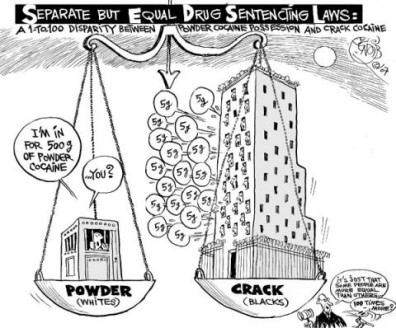Mandatory minimum sentence is a Crisis that has and is affecting a large amount of people. Mandatory minimum sentencing laws set minimum sentences for offenders to serve regardless of the circumstances giving judges no discretion or leniency to lower the sentence. Majority of the mandatory minimum sentences apply to manufacturing, distribution, or possession with intent to distribute of drugs as well as for various other charges. A very well known form of mandatory minimum sentencing comes from the three strikes law.Similarly to mandatory minimum sentencing, sadly the judge is not allowed to shorten the sentence no matter how small the third crime is with the three strike law.
The main reason why mandatory minimum came into existence was due to the War on Drugs occurring in the 70’s and 80’s. A swarm of drug presence came to the U.S. after events like Woodstock in the 1960’s and when soldiers returned home from Vietnam addicted to heroin and various other drugs. This caused President Nixon to launch a campaign dedicated to the use of illicit drugs. This all resulted in the passage of sentencing reform act of 1984 that ultimately led to the sentencing commission being created to set sentencing guidelines. The intentions of the commission were good but they did not take into consideration what would work best for crime control and the offenders circumstances.
In 2011 Hispanic accounted for 38.3% of offenders convicted with a mandatory minimum sentence, African Americans had 31.5%, Whites had 27.4%, and other races composed of 2.7%. Mandatory minimum had a large amount of disparities for it’s sentencing. For example, the disparity between crack and powder cocaine was at 1-100 ratio. People of color particularly African Americans and people from the lower class were the individuals purchasing crack because it was cheap while primarily white and upper class were purchasing powder cocaine which was the same thing but not condensed. With this being said, lower class and people of color occupied majority of prison institutions due to these reasons.
A few questions that came to mind while doing research on mandatory minimum sentence were, what is a better method of deterrence compared to mandatory minimum sentencing? Was mandatory minimum sentencing was made to help the society or to hurt it? Should judges have more input to cases regarding mandatory minimum? What adjustments could have been made to the mandatory minimum law to have made it successful as time progressed. And should rehabilitation be the primary focus for drug offenders rather than retributive punishment?
In conclusion, whether or not mandatory minimum sentencing law is effective or not is an ongoing debate with supportive and opposing feeling towards it. In my opinion the focus should be put more so towards violent offenders that actual pose a threat to society rather than drug dealers and users who need treatment rather than hard prison time. It is sad that in today’s day and time more money goes into the prison institution rather than the education system. If the money used to fund prisons was put towards schools and making them a place for all people then perhaps more people would not resort to selling and using drugs and could potentially use the school as a resource from staying out of trouble.



